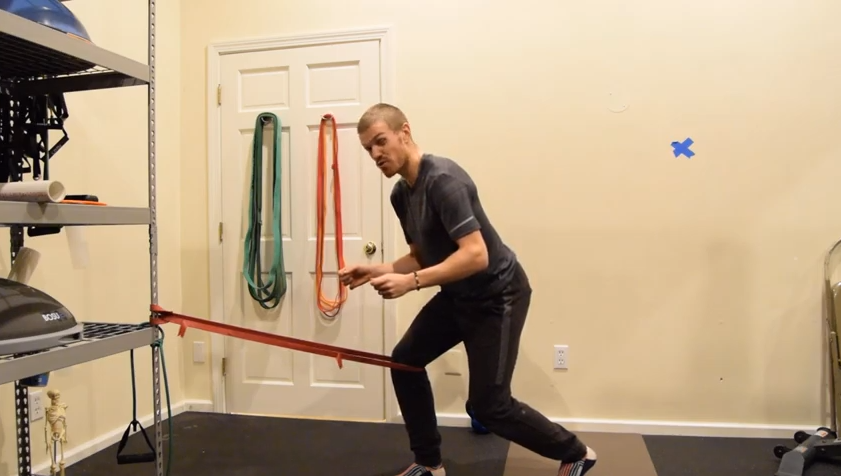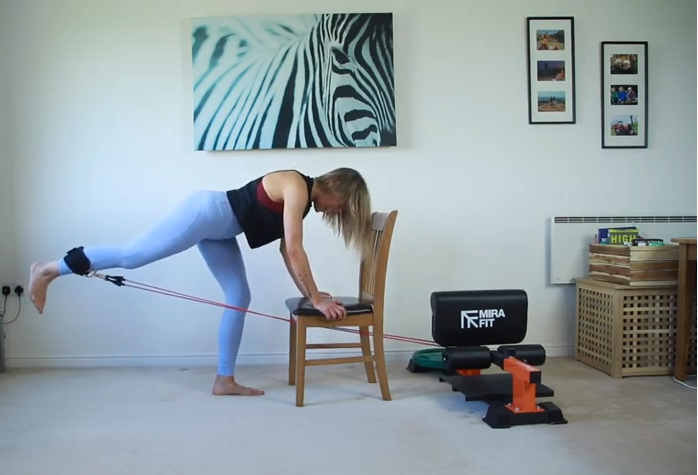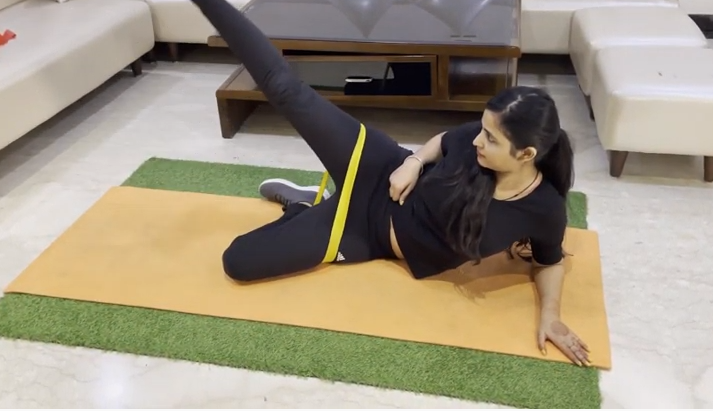Glute kickbacks are an effective way to strengthen your lower body and focus solely on your glutes. Bodyweight, bands, machines, and, of course, a cable machine can all be used to perform glute kickbacks. However, let’s concentrate on the cable crossover mechanism for the time being.
By isolating and focusing the resistance on the muscles better than squats, a cable glute kickback is one of the most excellent glute exercises for shaping and strengthening your gluteus maximus. As a result, this cable exercise is one of the greatest in enhancing pelvic stability, and it’s also relatively simple to perform. With a cable machine, you can quickly change the difficulty level and do a wide range of exercises.
Various kickback variations, including the cable glute kickback substitution, exist for those looking to improve their lower body strength. Whether you want to build strength and muscle, improve athletic performance, or get a good look behind the neck, cable glute kickbacks are the exercise for you. Plus, it doesn’t call very much muscle power. So to get the most out of this workout, you must focus on good form, execution, and a full range of motion.
Table of Contents
Muscles Used in Cable Glute Kickback Exercises:
The Major Muscle Groups Are:
By targeting the gluteus maximus, medius, and minimus, the cable glute kickback is an excellent exercise for building a strong posterior chain. One of the most powerful muscles in the body is the gluteus maximus.
The gluteal muscles can be strengthened and sculpted with the use of the cable kickback.
Second MUSCLE GROUP:
The cable glute kickback primarily targets the glutes but also works the hamstrings. The plant leg’s calf and quadriceps also engage to keep you stable and in balance as you move.
At last, the abdominal muscles contract to lend even more back up.
Advantages of Cable Glute Kickback Exercises:
Whole-body stability, enhanced leg power, improved posture, enhanced athletic performance, and reduced lower back pain are some of the extra benefits of glute kickbacks.
Many believe squats and lunges are the only effective way to strengthen the glutes. These two movements are fundamental to any fitness regimen, although they do not specifically target glutes. Unlike squats and lunges, which focus solely on the quadriceps, the glutes and hamstrings are worked by performing cable glute kickbacks.
1. Gains in Muscular Strength
This is the single most effective exercise for boosting lower body strength. Gains in stability, balance, speed, and vertical leap are just a few benefits of developing glute strength.
The cable glute kickback workout will benefit your glutes, leg muscles, and core.
2. Isolating the Glute Muscles
Specific muscle growth stimulates through isolating and working on them individually. This is why cable glute kickbacks are superior to squats when working your glutes.

The gluteal muscles are the intended focus of the cable glute kickback. Throughout the workout, you should feel your muscles expanding and contracting.
3. Better Ability to Maintain Your Balance and Stability
It’s an excellent way to strengthen your abs, ankles, calves, quadriceps, and overall lower body. Strengthening these muscles is essential for maintaining equilibrium. Doing this exercise slowly and deliberately can help you strengthen the link between your mind and body, which will lead to more efficient muscle activation.
4. Imitates real-life movement
The benefits of this workout extend beyond the gym and into your daily life. This exercise is beneficial because of the motions you conduct. At the same time, it is similar to those you perform daily, such as climbing stairs, standing for long periods, or jogging.
5. Relieves pain in the lower back
Chronic low back discomfort is often a sign of weak hip muscles or improper alignment of the hip joints. Tension in the back can be relieved by doing cable kickbacks.
6. Posture improvement
Back and neck pain, as well as hip and shoulder misalignment, can result from slouching. Doing cable glute kickback exercises will help you straighten your back by realigning your hips.
With a cable machine, learn how to do a cable glute kickback:
There are three distinct forms of the cable glute kickback workout. First, standing cable kickbacks rely exclusively on the hip extension to generate movement (no knee movement). The second is taken from a position of minor bending at the waist, with the knees slightly extended. The final technique is a cable kickback while kneeling.
Remember that you should fully contract your glutes towards the end of your range of motion for maximum benefit.
While the kneeling variant offers greater mobility, the standing version permits a superior, more stringent form.
1. Glute Kickback Technique Using a Standing Cable
To begin the cable glute kickback, hook your ankles into the machine’s strap and lower the pulley to its lowest setting.
Put the strap over one of your ankles and face the machine with your feet apart.
Hold on tight and maintain a neutral spine position. Once your leg is fully extended, straighten it and bring it back to a 90-degree angle.
Remember that stretching your hip outward is a job for your glutes (pushing your leg straight back).
Raise your rear leg as high as it will go behind you, hold for 1-2 seconds, and then bring it back down Repeat.
2. Kickback Technique While Bent Over Standing
To perform a cable glute kickback, secure your ankles to the cable machine and adjust the pulley to its lowest setting.
Strap one ankle to the machine, stand with your feet slightly apart and lean forward by pushing your hips back. Remember that your glutes are the muscle responsible for stretching your hips outward. This means that the benefits of exercising the hip flexors are diminished when performed in a standing position because of the reduced range of motion at the hip joint.
After grabbing the machine’s frame with both hands, you should push your butt back, extend your leg straight until your body is straightforward, and contract at the glute, holding for 1-2 seconds before returning to the starting position.
3. Technique for Cable Kickbacks while Kneeling
Grab a flat bench and kneel on it so that you can perform the kneeling cable kickbacks exercise.
Committing These Common Errors With Cable Glute Kickback
One can make a few blunders while doing this physical activity. And if you are doing any of these things, you will probably not get the benefits it offers.
1. Using Your Leg As The Primary Driving Mechanism
Your leg shouldn’t have to carry the weight. For example, when performing the cable glute kickback, many people swing their legs to generate momentum. If you do this, you’re probably trying to lift more weight than you can safely handle. Instead, focus on keeping a tight grip on your glutes and maintaining a steady action throughout the workout.
2. Performing Partial Repetitions
Some weightlifters don’t do cable glute kickbacks properly, stopping after only a few feet of leg extension. The effectiveness of the glute kickback relies on the full range of motion more than any other exercise; the farther you can kick back, the more tension you will deliver to your glutes.
If you’re having trouble completing total reps, don’t be afraid to drop down to a lighter weight.
3. Lacking Persistence
You must perform this exercise with a full range of motion. A more comprehensive range of motion indicates a more effective rep. For example, one complete rep of the cable glute kickback consists of stretching your leg back until your back and leg are entirely straight. Strength improvements are proportional to the amount of strain placed on the glutes. Therefore, ensuring proper form and a complete range of motion are given more priority than weight.
4. Having a straight back
Another common mistake is standing up straight when doing the cable glute kickback. However, this exercise is less effective for targeting the glutes because you can acquire a complete range of motion when standing. By leaning forward ever-so-slightly, your range of motion will increase dramatically!
5. Incorrect Weights
A common problem is picking too much weight, making it impossible to maintain a balanced posture. Your lower back will hurt from the arch you’ve had to make to support the weight. If you don’t use a full range of motion and focus on perfect technique, lifting high weights won’t help you get stronger. Too much load causes you to rely on momentum rather than your muscles.
6. Getting the upper body moving
The only part of the body that should move is the leg. So don’t try to move the upper body.
7. Loosening the Hips
When you rotate your hips open, your entire body twists to the side. Always keep your hips and torso looking forward while using a cable machine to maximize your workout results. Don’t let your body turn at all.
Think about the amount of weight you’re lifting, whether or not your back is perfectly straight, whether or not your move is complete, and whether or not you’re racing through your sets. You might be using too much weight if you’re lifting with poor form and not getting through all of your reps.
Multiple Variations on the Cable Glute Kickback:
1. SWITCHES
As a version of the glute kickback, the cable switch targets the middle and lower gluteal muscles. The equipment is set up the same way as in a standard cable glute kickback. It would help to turn your foot 90 degrees to the right or left as you bring your leg back in a kicking motion.
During the peak of the repetition, squeeze your glutes hard and then slowly return to the beginning position. Remember to alternate legs and do it again!
2. MACHINE FOR GLUTE PUSHDOWN
The cable glute kickback exercise motion is similar to the glute pushdown machine. After positioning the pad, so it rests in the bend of your knee, squeeze your glutes and abdominals to lower and pull back the pad.
Pull your tailbone toward your chest and return to the beginning posture gradually. Then, alternate your leg and try again!
Alternatives to the Cable Glute Kickback (how to do cable kickbacks at home):
1. Glute Bridges (Hip)
One of the best and simplest ways to work on your glute strength is using the glute bridge. When people move large objects without considering their form, they often experience back pain. Additionally, glute bridges help correct poor posture and relieve back discomfort.
When squatting or deadlifting large weights, those who experience lower back pain should complete three sets of glute bridges with 20 reps between each set. This will lessen discomfort and protect you from harm.
 2. Kickbacks with Banded Glute
2. Kickbacks with Banded Glute
Using a resistance band for glute kickbacks is equivalent to using a cable. Here a resistance band will suffice in place of a cable machine. First, select a high-quality resistance band.
3. Kickbacks with Bent Knees
Another great alternative to the cable glute kickback can be used instead. Again, the identical glute kickbacks are performed, but this time without cables and instead on the floor. Exercises like this one are great for shaping your glutes into a more desirable shape.
4. Glute Bridges with One Leg
This workout is an advanced form of the glute bridge exercise. Here, you can provide equal attention to both sides. If you have lower back pain on one side or notice that one of your legs is significantly weaker than the other, you may find that single-leg glute bridges are helpful.
 As a result, you’ll have better posture because you’ve strengthened your glutes and lower back muscles.
As a result, you’ll have better posture because you’ve strengthened your glutes and lower back muscles.
5. Sumo Squats with Dumbbells
The glutes and hamstrings benefit significantly from the Sumo squat. Do this exercise if you want to be able to squat or deadlift more weight. In addition, this exercise can strengthen your less-than-stellar muscles, allowing you to lift heavier loads with ease.
6. The Romanian Deadlift
One more of the most effective home-based glute exercises! Now is not the time to engage in kickback schemes. Instead, this hip hinge exercise is essential for proper form and alignment during any bending movement.
The Romanian deadlift is an excellent base-building exercise that strengthens your glutes and hamstrings. So when you’re cooped up at home and trying to decide between glute kickbacks and another workout, consider Romanian deadlifts.
7. Perform Kettlebell Swings
Kettlebell swings are another fantastic at-home workout, a terrific alternative to cable glute kickbacks for strengthening your glutes and hamstrings. Here you will only need a kettlebell as a piece of equipment.
This workout enhances your lower body’s strength and speed, making you a more formidable competitor in any activity. You’ll need to squat, jump, run, and drift for most of your sports. And to do it without risking damage, you’ll need to hone your technique and strength to the max. Therefore, you can expect to improve your performance on the field after engaging in this activity.
8. Jumping Squats
For more glute strengthening, try the jump squat. The entire back muscles group is engaged during this movement. The activity requires using your glutes, hamstrings, lower back, and calves. Since your glutes and hamstrings are being worked the most, so jump squats can be substituted for glute kickbacks.
9. The Hip Thrusts
It is possible to perform hip thrusts using only your body weight. Challenge yourself further by focusing on one leg at a time. However, when your glutes are sufficiently developed, you should begin using a barbell, dumbbells, or even plates to increase the resistance.
10. Flutter Kicks
Rest your legs over the edge of a flat bench. Alternately raise and lower your legs while holding onto the bench. Put in a lot of effort to drive the motion with your glutes. Always keep your glutes tight.
11. Step Ups
A step up is a form of resistance training that is very similar to a glute kickback, except that instead of kicking your leg back against the resistance, you use it to step up.
In the beginning, use only your body weight when stepping. However, you can raise the difficulty of your workout by using dumbbells, a barbell, or an EZ bar if and when you feel ready.
12. Bird Dogs
Bird Dogs are performed by extending the arms and kicking back the glutes. To put it simply, this is a more dynamic workout that will help you engage other muscles, such as your core and back, simultaneously. This activity also enhances balance and coordination.
13. Frog Pumps
While the frog pump is structurally similar to a hip bridge, it requires significantly more hip abduction. As a result, your gluteus medius and minimus will be more actively engaged with this (side glutes).
14. Legs back, toes down pulsations
Get on your hands and knees. Put your hands precisely under your shoulders, and then stretch one leg straight behind you while maintaining your toes pointed down. You may make your leg go up and down in a wavelike motion by contracting your buttocks.
Last Words
So, these are some of the best exercises you can do at home instead of cable glute kickbacks. All of these exercises can be performed in place of glute kickbacks. Still, you must ensure that your training plan is structured appropriately and that every muscle fiber is targeted. Instead of making the same move over and over, train your glutes from different angles and positions. You should also work out your hamstrings and quads, or your body will look uneven. So make sure you choose the right mix of exercises.
Also, keep in mind that the glute kickback is a single-muscle exercise. You should also do compound exercises like deadlifts, squats, lunges, and glute kickbacks to get great-looking glutes and legs. So think about these things when you choose your workout.
